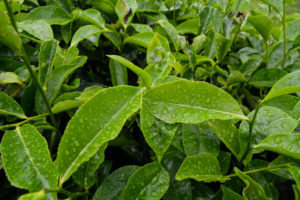By definition, green tea is minimally oxidized.
This means that out of all the types of tea, green tea is closest to the natural state of the tea leaves before they were plucked.
In most Japanese green teas, the tea leaves are treated with steam to avoid oxidation as soon as possible.
No withering step is involved, unlike most Chinese green teas.
Besides that, the steaming method preserves this fresh aroma much more than the pan frying method.
The essence of Japanese green tea
In my experience, the traditional Japanese green tea has a very fresh and sweet aroma with marine tones.
It’s supposed to make you feel as if you were inside the tea field.
Of course, this doesn’t apply to roasted green teas such as houjicha and kyobancha.
The fresher the better
If you buy a high quality green tea and it doesn’t smell fresh, or it has no aroma at all, it could be that it is past its prime or that it isn’t of high quality at all.
Green tea starts to oxidize after you open its package. So it is best to drink it often.
I don’t recommend leaving green tea for a special occasion, because you might end up waiting for far too long and wasting your money.
In fact, you should drink your most expensive green teas first.
Another option is to refrigerate your green tea.





